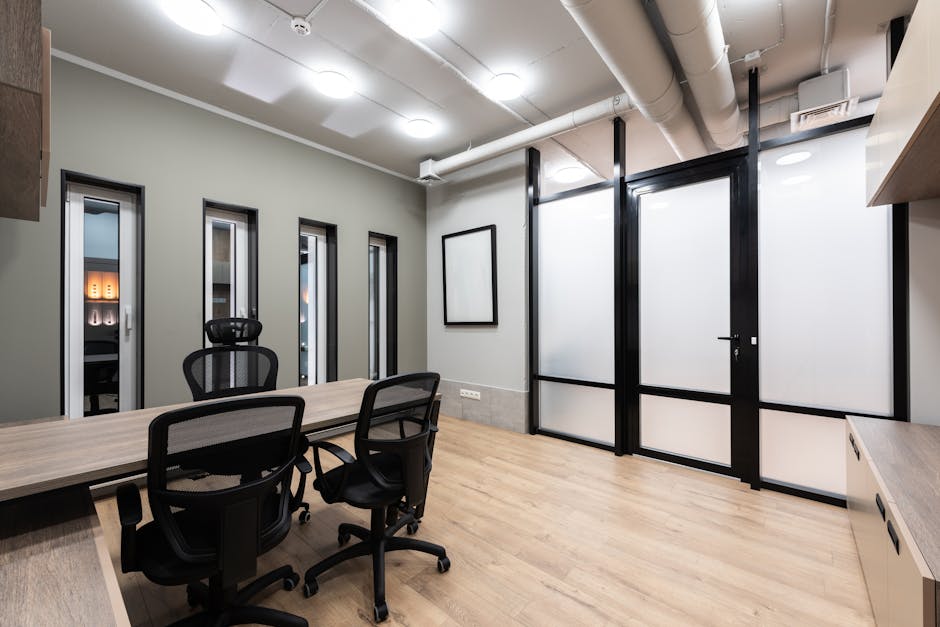Articles on Workplace Strategy

Unlocking the Benefits of Office Hoteling: A Flexible Hybrid Workplace Strategy
Office hoteling is a flexible hybrid workplace strategy that allows employees to reserve workspaces on an as-needed basis. This article explores the benefits of office hoteling, including increased flexibility, improved space utilization, and reduced real estate costs. Discover best practices for implementing a successful office hoteling strategy in your organization.
By Julian Everett

Crafting a Winning Workplace Strategy: 6 Steps to Align Your Business Goals and Employee Needs
In this post, we outline the six essential steps to create a winning workplace strategy that aligns your company's goals with employee needs, optimizes your office space, and leverages the right tools for success in the evolving world of work.
By Ethan Montgomery

Top 10 Workplace Trends Shaping the Future of Work in 2024
The future of work is rapidly evolving, driven by advancements in technology, shifting employee expectations, and global events. This article explores the top 10 workplace trends that are shaping the future of work in 2024, providing insights and strategies for corporate HR managers, IT managers, Real Estate & Facility professionals, and educational institutions to adapt and thrive in the new world of work.
By Lucas Hamilton

The Ultimate Guide to Crafting a Successful Return to Office Strategy in 2023
As companies navigate the post-pandemic landscape, crafting a successful return to office strategy is crucial. This guide explores the benefits, challenges, and best practices for implementing a return to office plan that prioritizes employee well-being and business objectives. Discover how to leverage workplace technology, foster collaboration, and create a flexible, engaging office environment that drives productivity and company culture.
By Julian Everett

What I Got Wrong About Hybrid Work: Lessons Learned for a Successful Hybrid 2.0
As organizations navigate the complexities of hybrid work, it's crucial to reflect on the challenges faced and adapt strategies for a more effective Hybrid 2.0 model. This article explores the lessons learned from the initial implementation of hybrid work and provides insights on how to create a successful and sustainable hybrid workplace.
By Julian Everett

Hot Desking vs. Closed Offices: Weighing the Pros and Cons
In today's dynamic work environment, companies are exploring various workplace strategies to optimize space utilization and employee productivity. Two popular approaches are hot desking and closed offices. This article delves into the pros and cons of each to help you make an informed decision for your organization.
By Isabella Hunter

Hot Desking vs. Hoteling: How to Choose the Right Approach for Your Workplace
In today's dynamic work environment, companies are increasingly adopting flexible workspace strategies like hot desking and hoteling. This article explores the distinctions between these two approaches and provides guidance on selecting the most suitable option for your workplace, taking into account factors such as team size, work patterns, and organizational culture.
By Nora Bradford

Navigating the Return to Office: A Phased Approach for Success
As organizations prepare for the return to office, a phased approach can ensure a smooth transition while prioritizing employee well-being and productivity. This article explores the key considerations and strategies for implementing a successful return to office plan, focusing on clear communication, flexibility, and adaptability.
By Nora Bradford

Crafting the Perfect Return to Work Survey: Key Insights for HR Managers
As organizations navigate the return to the office, a well-designed return to work survey is crucial for gathering employee insights and shaping a successful workplace strategy. This article explores the key components of an effective survey, providing HR managers with actionable tips to create a survey that captures valuable data and supports employee well-being during the transition.
By Julian Everett

Unlocking the Potential of Hybrid Work: Strategies for a Thriving Modern Workplace
As organizations embrace the hybrid work model, it's crucial to develop a comprehensive strategy that addresses the unique challenges and opportunities of this new reality. This article explores key elements of a successful hybrid workplace strategy, from technology and communication to culture and employee well-being, helping you create a thriving and productive work environment.
By Oliver Wright

What is a Desk Check? Exploring the Importance of Desk Checks in Flexible Workplace Strategies
Desk checks are a crucial component of flexible workplace strategies, enabling organizations to optimize space utilization and enhance employee experience. By understanding what desk checks are and how they contribute to workplace efficiency, companies can create dynamic and adaptable work environments that support the needs of their workforce.
By Evelyn Parker

Embracing the Future of Work: Understanding the Hybrid Workplace Model
The hybrid workplace model combines remote work and in-office presence, offering flexibility and adaptability for employees. This article explores the meaning of hybrid work, its benefits, and strategies for creating a successful hybrid work environment that promotes productivity, collaboration, and employee well-being.